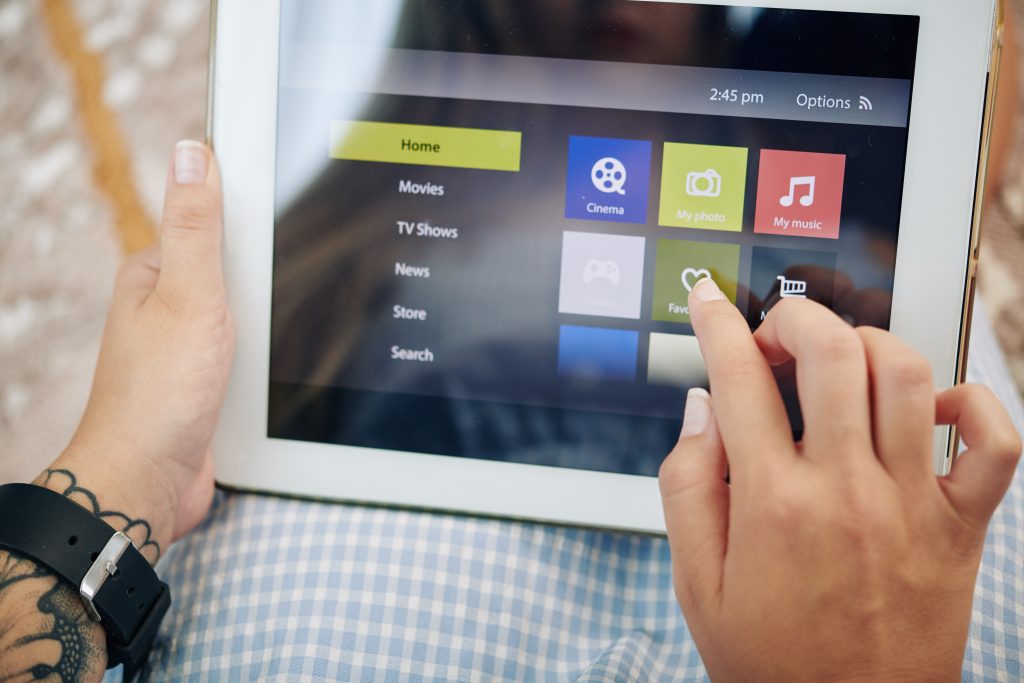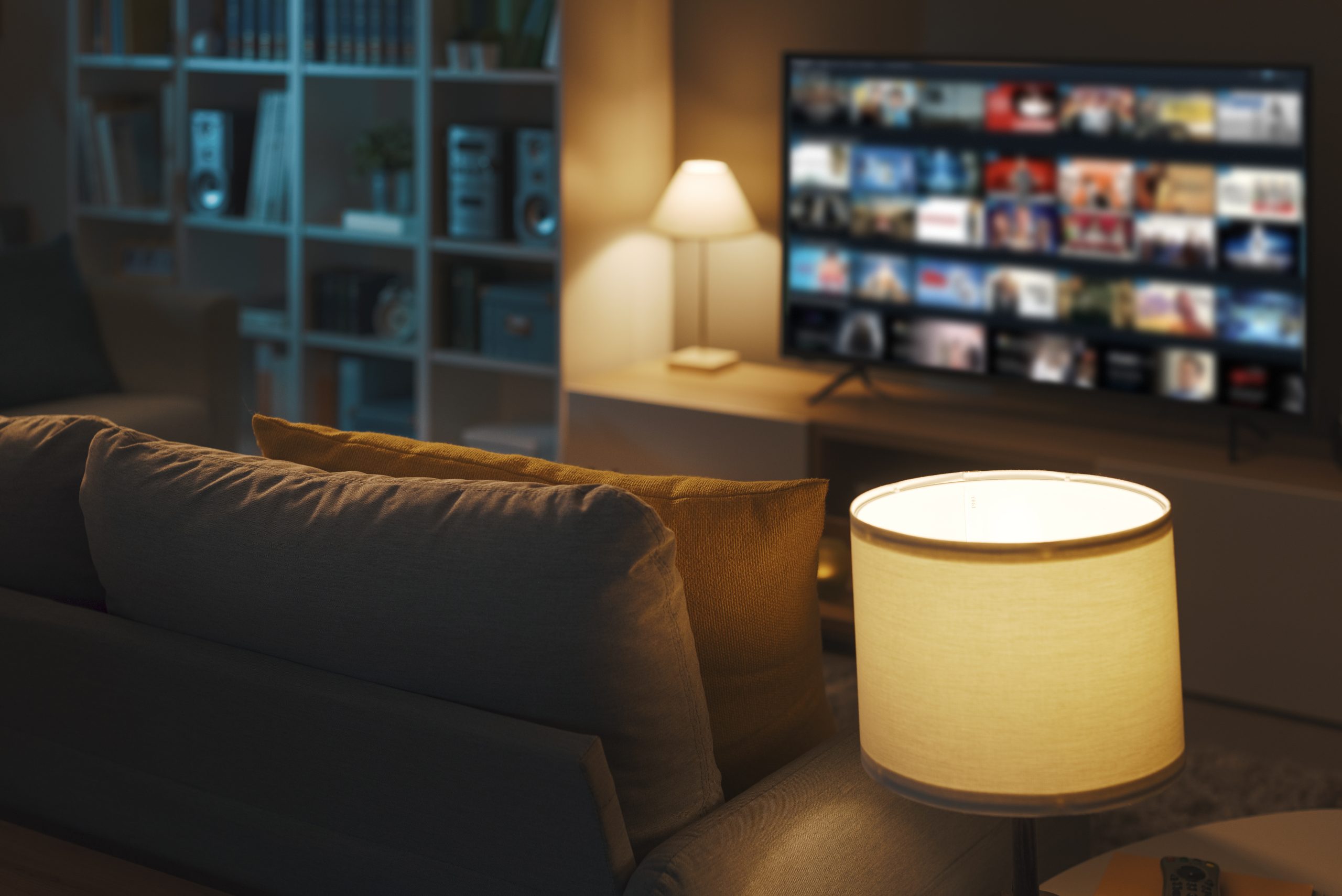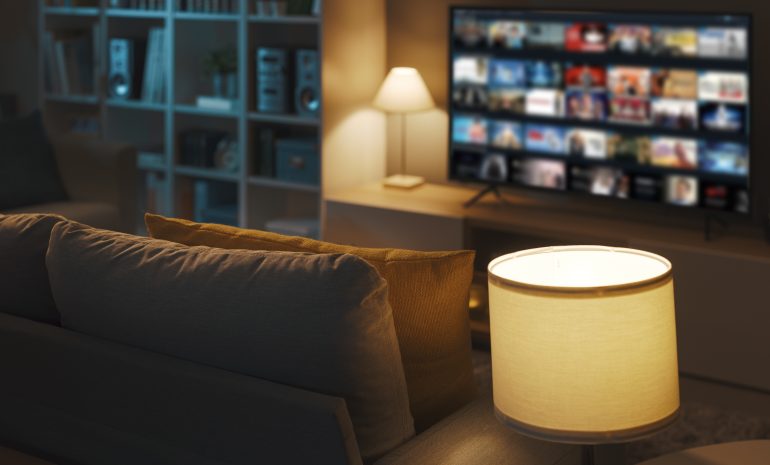Why should you care about smart TV apps
Why should you even bother with smart TV apps?
Reason #1: New customer
Reason #2: New source of revenueStill skeptical? Just read on.
The smart TV market has been valued at $288.71 billion in 2022. FMI analysts estimate the market value to rise to $1,910.44 billion by 2032. That’s an increase of 561.7%! And naturally, the development of smart TVs is closely related to the development of smart TV apps. Smart TVs are now used by more than three-quarters of US households. During the covid pandemic, people quickly got used to subscribing to services like Netflix or HBO, and the use of smart TV apps more than tripled.
Do you still think that this is not an important platform for you to reach and get new customers?
Together with the development of
- 5G technology that is up to 100x faster than 4G;
- predictive analysis that recommends us films and series based on our historical pickings;
- personalization (customization) that enables us to enjoy watching TV just the way we like it;
- voice control that makes the application significantly easier and more pleasant to use
are the smart TV apps on rise and are predicted to long stay that way.
In addition, users and creators benefit from the fact that the OTT market (over-the-top; content shared directly to users over the internet) is not dominated by one monopoly player, but rather by a number of smaller companies that are constantly competing for customers. From an economic point of view, the market is not saturated and allows anyone to get in the game and become the leader of the future of smart TV applications.
ADVANTAGES
The list is long, but the main benefits are crystal clear: a new platform equals new customers and that equals new sources of revenue. Don’t believe it? Read on. We’ve sorted the long list of benefits into 5 top reasons that will appeal to your marketing, sales and finance departments.
1. New communication channels & new customers
- you can engage new and existing customers with audiovisual content through a new medium
- you get more product information to your customers
- your content can be accessed by customers on different devices – on their phone, tablet, computer and TV
- you can easily penetrate beyond your home market via a smart app
2. New income source
- you can charge for content in the app
- you can offer space in the app to advertisers for advertising
- you can promote and sell your products in the app
- you get new data about your customers that you can use for more accurate advertising targeting
3. Stay ahead of the competition
- smart TV apps are not yet widespread en masse
4. Enhance your brand
- a new channel can help you increase your customers’ brand loyalty
- with entertaining content, you can more easily build a community of fans of your brand
5. New topic for PR
- with a new and yet untapped channel, you will attract media attention

HOW WE DEVELOP SMART TV APPS
1. Specification
We usually help our clients to fine-tune the design of the application to make it as user-friendly as possible. We then estimate the overall idea in time and pricing.
2. Design
As we’ll show you below, UX design is the alpha omega in smart TV apps. We design, you approve. Of course, we’re also able to incorporate your own designs.
3. Development
After you approve the designs, we start developing.
The app always has about 95 lines of code that are common to all platforms. The remaining code addresses the differences of each platform (Samsung, LG, Apple TV,…). We then export the resulting code for different platforms, release years and screen resolutions.
What you should know is that smart TV apps are one-page. That means no new pages are loaded, only the content that is stored on the server. The app itself works like a single browser page. It also contains several specific objects such as a video player. Each platform (e.g. LG or Samsung) then works differently with these.
We develop our apps in several rounds, which you comment on.
The main part, called focus framework, is programmed in vue.js. You can read about the importance of focus a few lines below. We program in Microsoft’s Visual Studio and test directly on TVs from each manufacturer (not on emulators).
4. Testing and registration on platforms stores
The process of preparing to register an app on platforms is a painstaking discipline. It can take several months and the preparations themselves several weeks. Of course, we have numerous experiences with the process, so we know what to look out for to avoid unnecessary delays. Even so, it has to be said that every case is different and you can never predict how long it will take. In fact, if there is even the slightest shortcoming, the platforms return the application for refinement, followed by a new registration attempt.
Of course, we take care of the registration process. To give you an idea, we deal with:
- Thorough user testing. That means we test it, you test it, and ideally a third party who has never heard of the app before and we need to see how they interact with it test it. We discuss the emphasis on bulletproof design and navigation below.
- Thorough but concise documentation for each platform.
- Test accounts for testers of each platform.
- We’re preparing the app for really in-depth testing.
SPECIFICS OF SMART TV APPLICATION DEVELOPMENT
Navigation
Smart TV apps differ significantly from mobile apps in their design options. In a smart mobile app, the user’s movement is unrestricted, while in a TV app, the user’s movement is limited by the standard elements of TV remote controls, which over the last 30 years have undergone virtually no evolution. Common to all controllers are the 4-way arrows, numbers, enter and the back button. But at the same time, your design must be compatible with the mouse and keyboard that users are starting to popularly attach to their TV. Finally, you have a large area that needs to be filled with your content.
The rule of visual immediacy is the basis of navigation in a smart TV app. In other words, pressing the left arrow moves you one element to the left.
The design of a smart TV app must therefore be, above all, simple and intuitive. After all, you’re creating entertaining content that users will relax with. You definitely can’t make them think while using the app. After all, the user experience is the main criterion that will make users either love or hate your app.
UI & UX
Main takeaway: Quality UX (user experience) design, including a well-thought-out UI (user interface), is the basis of any working smart TV app.
The first thing to keep in mind is that the TV is usually viewed from 3 meters away, so all elements must be easy to read from a distance. This means no small buttons or labels. So keep in mind that every screen should only contain a menu, a content container (browser) or a video player.
The second specificity of smart TV apps is in the design of the focus. At any given moment, the user must see where they are on the screen. That is, which button or element is currently selected and from where one can move further on the screen. The focus must never disappear (only when the video is playing).
We have developed a special framework written in vue.js for dynamic focus shifting. This ensures that the focus is transferred to the immediate element, either known in advance (the button) or unknown at the moment (the tile with data that is loaded from the server).
Every application consists of components that can combine focusable and non-focusable elements. The focus engine then transfers focus between the base elements (single focus) and containers (grouping of multiple focusable elements).
The focusable element therefore knows where to go next as a response to various remote control events (left, right, up, down, back and enter) as each event can trigger a focus change or an action (move to another screen, display a popup window, etc.).
Testing
We have already mentioned the importance of testing above. But is so important that we’re going to talk about it some more. Smart TV apps are a potential mass phenomenon. That’s because your user is anyone who knows how to use a TV remote / from a 4-year-old child to our oldest fellow citizens. Plus, you have to assume that your users are not tech-savvy. That’s why you need to have the app tested by regular users, who you don’t say anything to and just observe how they use the app. We will then incorporate the insights from observation into the design and operation of the app.
Does a smart TV app make sense for your business, but maybe you’re just not sure where to start? We’re happy to help with the design, development and promotion. Whether you’re in the consideration stage or already looking for a reliable supplier.

